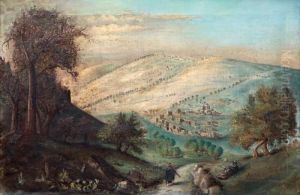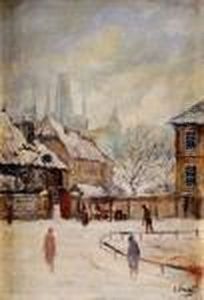Alois V. Vrany Paintings
Alois V. Vrany, born in 1863 in the Austro-Hungarian Empire, was a significant figure in the world of art, whose contributions spanned across the late 19th and early 20th centuries. His life and work were profoundly influenced by the historical and cultural shifts occurring in Europe during his time, offering a unique lens through which the evolution of art in this period can be understood. Despite the challenges posed by the two World Wars and the changing dynamics of the Austro-Hungarian Empire, Vrany managed to carve out a distinctive path in the art world.
Vrany's artistic journey was marked by a dedication to exploring various mediums and styles, showcasing his versatility and deep understanding of artistic expressions. His early works were deeply rooted in the traditions of his homeland, reflecting the landscapes, people, and ethos of the Austro-Hungarian Empire. However, as his career progressed, Vrany began to experiment with more modernist approaches, integrating elements of Impressionism and Expressionism into his work. This evolution mirrored the broader shifts in European art, as artists sought to capture the complexities of the modern world.
Despite facing the tumultuous backdrop of World War I and later, World War II, Vrany remained committed to his artistic pursuits. These conflicts, however, inevitably influenced his work, introducing themes of loss, resilience, and the search for meaning in the face of chaos. His paintings from this period are noted for their emotional depth and technical sophistication, earning him recognition both within the Austro-Hungarian Empire and abroad.
Throughout his career, Vrany was also deeply involved in the artistic community, contributing to the development of art societies and exhibitions that sought to promote innovative art forms and ideas. His commitment to fostering a vibrant artistic culture was instrumental in nurturing the next generation of artists, ensuring that the legacy of creativity and exploration he embodied would endure.
Alois V. Vrany passed away in 1945, leaving behind a rich body of work that continues to inspire and intrigue art historians and enthusiasts. His life's work stands as a testament to the enduring power of art to capture the human experience, transcending the boundaries of time and place. Vrany's contributions to the art world are remembered as pivotal in the transition from traditional to modernist expressions, highlighting his role as a bridge between the old and the new.

